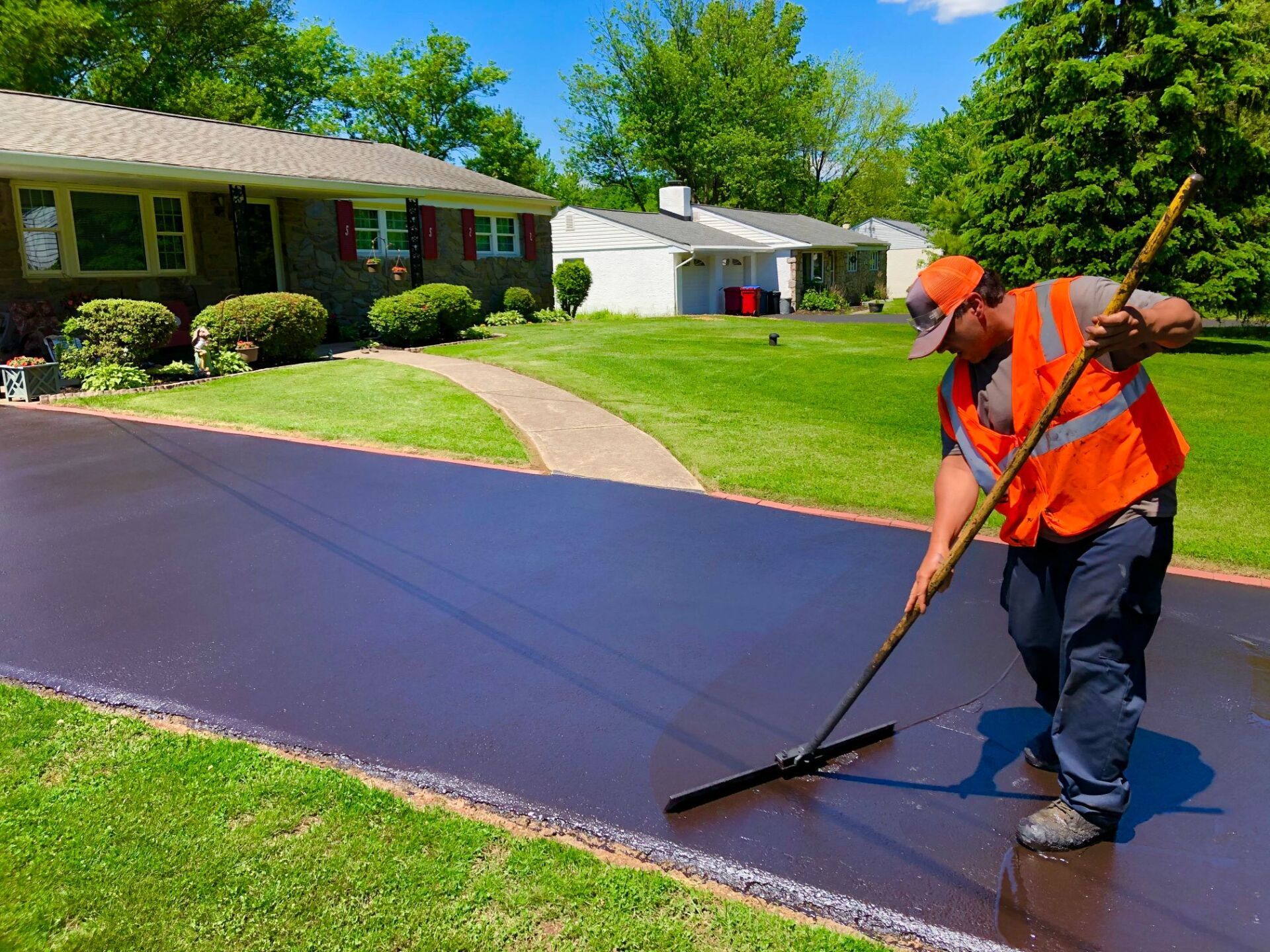Raise Pavement Performance: Cold Mix Asphalt Sealing Techniques
Wiki Article
Cold Mix Asphalt Vs. Hot Mix Asphalt: Which Is Right for You?

Make-up Differences
Cold mix and warm mix asphalts differ dramatically in their structure, with distinctive qualities that affect their performance and applications. Cold mix asphalt is created by emulsifying the asphalt binder with water and an emulsifying representative prior to mixing it with accumulation. This approach permits the asphalt to be convenient at reduced temperature levels, making it optimal for temporary repair work and for usage in colder weather. Warm mix asphalt, on the other hand, is manufactured at heats, commonly between 300-350 ° F, which helps to accomplish much better compaction and an extra durable end product. The hot mix asphalt manufacturing procedure involves heating the aggregate and asphalt binder individually prior to incorporating them at the asphalt plant.
Additionally, chilly mix asphalt has a tendency to be much less dense and much more versatile than hot mix asphalt. This flexibility makes it better suited for areas with greater degrees of activity, such as driveways or roadways with rush hour. On the other hand, hot mix asphalt is known for its high sturdiness and resistance to rutting and splitting, making it a favored option for highways and high-traffic roadways where long life is vital.
Installment Process Variances
The procedure of installing chilly mix and warm mix asphalt exhibits significant variances in their demands and treatments. In contrast, hot mix asphalt demands a more sophisticated installment process. Due to the heating demands, warm mix asphalt setups are typically brought out by professionals with specialized devices, guaranteeing a much more structurally sound and permanent result.Longevity and Long Life Factors
When thinking about asphalt alternatives, durability and longevity are vital variables to evaluate for lasting pavement performance. Hot mix asphalt (HMA) is understood for its outstanding toughness and long life. The high temperature levels throughout the laying and mixing process permit far better compaction, causing a denser and more powerful pavement structure. This results in HMA being more immune to rush hour loads, severe weather, and the effects of maturing contrasted to chilly mix asphalt (CMA)
In regards to durability, HMA generally outperforms CMA as a result of its remarkable strength and resistance homes. HMA sidewalks have a longer service life, requiring less regular fixings and upkeep, which can translate to cost financial savings in the future. Additionally, HMA sidewalks are more conveniently customizable to fulfill details project needs, further improving their resilience.
Price Considerations
Thinking about the economic effects is a critical aspect when evaluating the selection in between hot mix asphalt (HMA) and chilly mix asphalt (CMA) for sidewalk projects. While the initial cost of warm mix asphalt is typically higher than that of cool mix asphalt, HMA usually gives an extra cost-effective solution in the lengthy run due to its exceptional resilience and durability.In addition to material prices, it's vital to consider the costs linked with setup and upkeep when comparing HMA and CMA. Eventually, the choice between HMA and CMA ought to take right into account not just the initial price but additionally the long-lasting economic implications to figure out the most cost-effective choice for the specific pavement project.
Environmental Effect Contrast
Contrast of the environmental effects in between warm mix asphalt (HMA) and cold mix asphalt (CMA) exposes distinctive differences in sustainability methods. HMA manufacturing calls for heats, causing raised energy intake and greenhouse gas emissions. The process likewise launches unpredictable organic compounds (VOCs) and harmful air pollutants (HAPs) into the environment. In comparison, CMA is produced and applied at lower temperatures, minimizing Click This Link power use and exhausts significantly. The lower production temperatures of CMA result in reduced fuel usage and reduced degrees of carbon dioxide discharges, making it a much more eco-friendly alternative.Additionally, the use of CMA often entails recycling existing asphalt sidewalk, promoting resource preservation and minimizing the amount of waste sent out to landfills. By deciding for CMA over HMA, road building and construction tasks can contribute favorably to ecological conservation initiatives.
Conclusion
Finally, the option between chilly mix asphalt (CMA) and warm mix asphalt (HMA) top article depends upon numerous elements such as structure, installment process, toughness, longevity, expense, and ecological influence. cold mix asphalt. While CMA uses a fast and affordable solution for minor repair services, HMA makes certain remarkable toughness and longevity for rush hour locations. Take into consideration these factors thoroughly to figure out which kind of asphalt is the right choice for your paving needs

Considering the economic implications is a vital aspect when examining the selection between hot mix asphalt (HMA) and cool mix asphalt (CMA) for pavement projects. While the first cost of hot mix asphalt is great post to read normally greater than that of cold mix asphalt, HMA typically gives a more affordable option in the lengthy run due to its superior sturdiness and long life. cold mix asphalt.Comparison of the environmental effects in between warm mix asphalt (HMA) and cool mix asphalt (CMA) discloses distinct differences in sustainability practices.In final thought, the option in between chilly mix asphalt (CMA) and warm mix asphalt (HMA) depends on numerous variables such as composition, installation process, resilience, durability, cost, and environmental impact
Report this wiki page